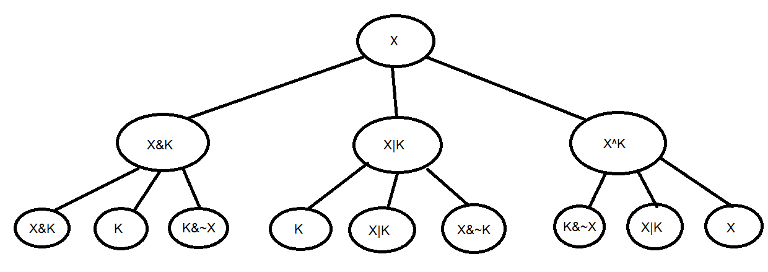The problem is Google APAC 2016 Round E Problem C
I can't understand the problem in my solution described below
We can create a tree and then find the pattern as follows: 
As can be seen above, there are only 8 possible numbers (not necessarily distinct) shown below: {0, x, x&k, x|k, (∼x)&k, x&(∼k), x^k, k} (where ∼n represents bitwise negation of n; and all operators have their usual meanings)
So we can create a transition table for each of these numbers for each of the possiblities of AND, OR, XOR. Using this logic I arrived at this solution
But my program is giving incorrect answer. Can someone point out the flaw in logic and/or implementation, please.











Auto comment: topic has been updated by yashv (previous revision, new revision, compare).
I also used the same logic for solving this question !!!
Your logic is right,but there was bug in your dp equation...
your working code : http://ideone.com/aoqfdZ
my code: http://ideone.com/QixOw6
Thanks for reply. But ar[i]&k, ar[i]|k and ar[i]^k will be one of ar[i]'s whose index is already in tr[][] table. S, why can't I just use this table for the calculation?
tr[5][2] will be 3 instead of 7.
updated code: http://ideone.com/A8HdCW
Thank you so much :)